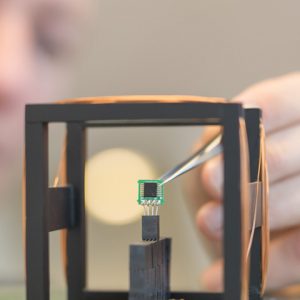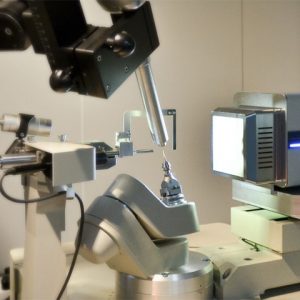CHALLENGE
Over the past 10 years SystematIC has designed a family of products which combines Ambient Light Sensing (ALS) and Infra-Red Proximity Sensing (PS) in a single SoC. The Ambient Light Sensor sensitivity matches the response of the human eye. The Proximity Sensor measures distance to an object using infra-red light reflection. For that the IC is directly driving an external IR-LED. Our client is a leading global organization providing components to mobile phone manufacturing companies. The challenge for both the Ambient Light Sensor and the infra-red Proximity Sensor is to achieve a wide dynamic range. The key applications to be served by the ALS is backlighting control that adjusts display brightness of a mobile device to conserve battery energy. The key application to be served by the PS is to detect proximity of an object, in case of the mobile device application that is the human ear, for example to deactivate the touch screen. This makes the IC a perfect solution for touch-screen portable devices such as smart phones.
SOLUTION
The IC solution for the mobile devices has been perfected and improved over several generations of the product, taking into account the user feedback. In the latest version of the IC the on-chip Ambient Light Sensor achieves a very wide dynamic range, covering 1 millilux to 65 kilolux. The Proximity Sensor can measure up to 10 cm with a single LED pulse of 10 us and 50 mA. All measurements are accessible on an I2C communication bus. A programmable interrupt pin minimizes the need to poll the device for data, freeing up the microcontroller resources and reducing overall power consumption. The IC operates on supply voltages from 1.7 V to 3.6 V and consumes only 100 nA in standby mode and 100 uA in operating mode.
TIME
SystematIC has designed the full ASIC and reached tapeout in 3 months, and supported the ASIC development over several generations.
WE ARE PROUD
We developed a robust architecture with an impressive performance over the targetted temperature range of -40°C to +85°C. For that we successfully reduced and mitigated leakage currents effects at high temperature. In the proximity detection we succeeded to increase sensitivity by a factor of 64 compared to previous generations to improve dynamic range considerable. The proximity sensor readout features ambient-light suppression algorithms and is able to operate from dark rooms up to bright sun conditions. The product has independent photodiodes and readout circuits for the ALS and the PS on a single die.

BENEFITS FOR CUSTOMER
- IP based readout, silicon-proven and mass-produced circuitry
- IC product design and development support (incl. foundry cooperation) for several generations
- Achieving a high-sensitivity Proximity Sensor readout allows IR-LED current reduction (factor of 64)
- Customer optimization between power consumption (battery life) and Proximity Sensor performance (distance) in programmable application
- Ambient-light cancellation algortithms enable optimal Proximity Sensor performance in wide range of ambient conditions, from natural sunlight to fluorescent and incandescent lamps
- Proximity Sensor photodiode responsivity peak optimized at 850nm/950nm
KEY TECHNICAL STATISTICS
- Chip Area: < 1 mm2
- Supply Voltage: 1.7 V to 3.6 V
- Proximity Range: 0 cm to 10 cm (up to 16-bit)
- Ambient-Light Range: 1 mLux to 65 kLux
- Temperature Range: -40 ⁰C to 85 ⁰C
OUR OTHER SUCCESS STORIES
IC solutions that are tailor made for you can help you achieve your business goals.
SystematIC was founded to help businesses envision, plan, and develop such custom IC solutions.











